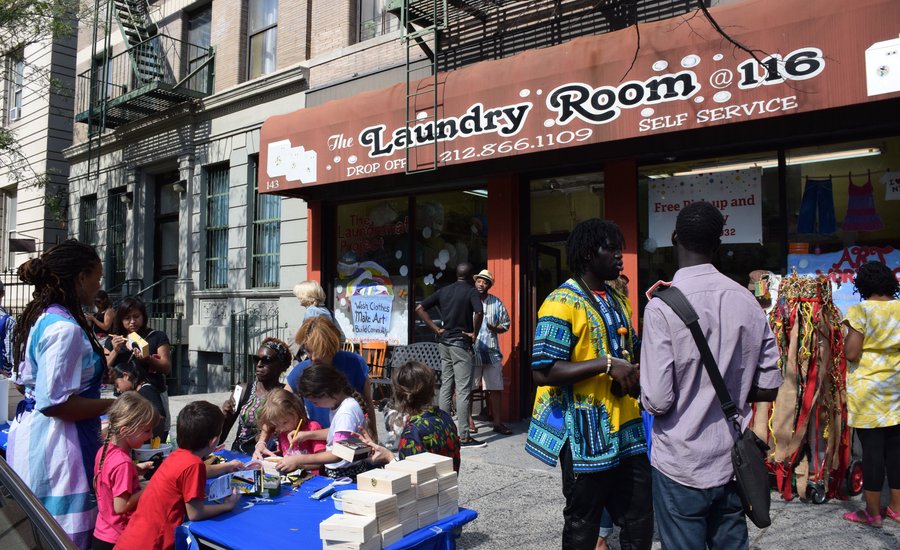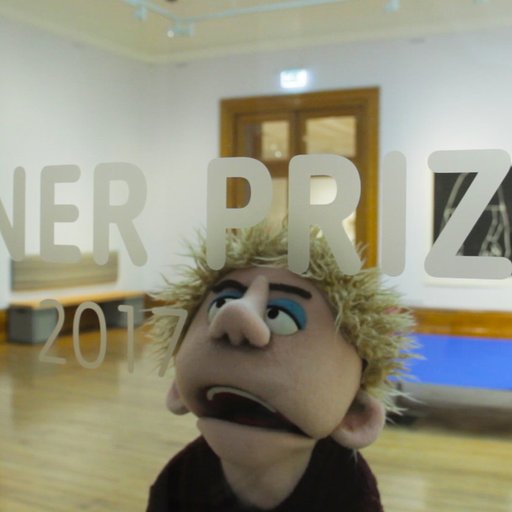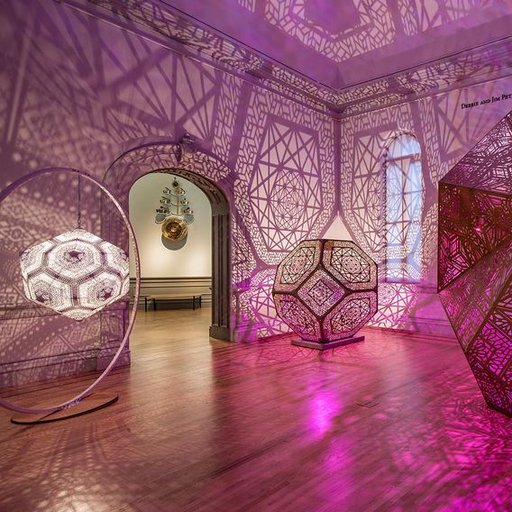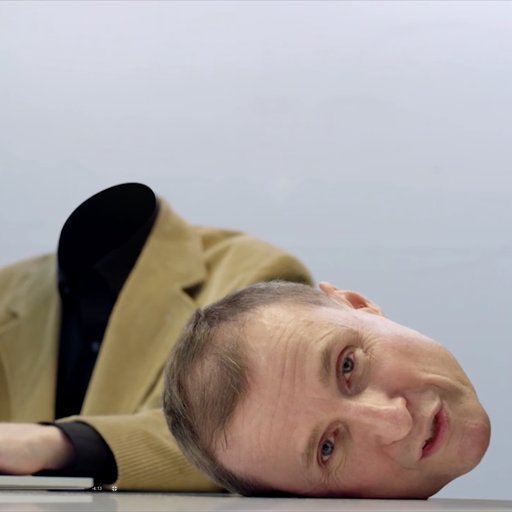In many modest income and minority neighborhoods throughout New York City's five boroughs, there has been an undeniable trend in real estate—attracted by the relatively low cost of living and opportunities for development, many communities previously ignored by the arts establishment for being too dangerous, too fringe, and/or commercially unviable have been recently flooded by gourmand coffee shops and gallery spaces with the ostensible intention of bringing art into these neighborhoods. While the ambition is well-meaning, what these spaces often represent is the erasure of a community's pre-existing culture and creativity and, more importantly, rapid increases in local rent prices which ultimately push many long-standing residents out. This trend is colloquially referred to as "artwashing."
Of course, there are art spaces and groups that are actively working to develop better practices and relationships, as discussed in
last year's article on the subject
by Jillian Billard
.
Among those leading the fight against gentrification is the nonprofit, T
he Laundromat
Projec
t
. Founded by Risë Wilson in 2005, The Laundromat Project has supported over 160 artists since its inception through its fellowship programs and artist's residencies with the mission of facilitating and training artists on how to develop responsible community-based cultural programming. Initially inspired by the concept of utilizing and activating laundromats as inherently diverse and accessible community gathering spaces, the project now uses the laundromat metaphorically, having worked with libraries, community gardens, and all other manner of spaces throughout the city, which provokes the following associative experiment: what if, instead of artisanal coffee shops and white-cube gallery spaces, we imagined a laundromat as the symbol of the arts entering a community?
In this interview with Artspace editor Shannon Lee, Laundromat Project's executive director Kemi Ilesanmi discusses the nonprofit's history, its unique programming, and how to highlight the culture that already exists within neighborhoods responsibly.
 Installation of
A Living Room on Roosevelt/Una Sala en la Roosevelt
(2015). A collaborative project between Ro Garrido (The LP Commissions Artist, 2015) and
Queens Neighborhoods United
. Commissioned by The Laundromat Project.
Photo Credit: Neha Gautam; Courtesy of The Laundromat Project.
Installation of
A Living Room on Roosevelt/Una Sala en la Roosevelt
(2015). A collaborative project between Ro Garrido (The LP Commissions Artist, 2015) and
Queens Neighborhoods United
. Commissioned by The Laundromat Project.
Photo Credit: Neha Gautam; Courtesy of The Laundromat Project.
How was The Laundromat Project pitched in it's early years? How was it introduced to you?
I've been on the board since its official inception in 2006 but Risë Wilson had this idea since 1998 or so. By 2004, she'd obtained support from the Echoing Green Foundation and was really excited to put things into full motion. We'd bonded because at the time, I had been working as the curator at the Walker Arts Center in Minneapolis and had just moved to New York. I'd run the residency program at the Walker (along with more conventional curator duties) and worked with a number of artists including Glenn Ligon and Christian Marclay on putting together projects that were about connecting those artists to various communities in the twin cities.
At the beginning, the idea for The Laundromat Project was to bring art and artists and art-making into community gathering spaces like a laundromat. Risë was living in Bed-Stuy and was interested in the laundromat as a place to highlight the art that already exists in communities— their artists as well as the everyday creativity of its residents. The original idea was to actually own and operate our own laundromat that would have the first floor be the business where people would enter our orbit. From there, if people chose, there would be access to a print shop in the basement, artist's studios on the second floor, etc. The idea was that there would be runoff profits from the laundromat itself that would help sustain the nonprofit.
It's so interesting to hear that this was a concept that was brewing back in 1998. Gentrification is something that's always been an issue but it's been especially at the fore of conversation the past 20 years. Was this something The Laundromat Project was thinking about from the beginning? Have conversations about it shifted through the years?
By the time I'd attended my first board meeting in 2006 (they'd started meeting in 2005), changing neighborhoods and communities—particularly P.O.C. communities—were already part of the discussion because we were all living in those places. Gentrification was definitely something we were experiencing and was part of our awareness. It was being on the board for The Laundromat Project that I first heard the term "creative place-making." Risë had been to a conference where that had come up and brought this concept back—I'm not even sure creative was a part of it at that point. It's the idea of creating and nourishing place and being aware of the changes that are inherent in that process. Nowadays, we use the term "place-keeping."
Our very first year of programming was the summer of 2006. We worked with three artists— Shinique Smith was working in Fort Greene, Rudy Shepherd was working on the border of Washington Heights, and Miriam Neptune was working in Bed-Stuy/Crown Heights. Each of them were working within these contexts of neighborhoods that were changing.
Were you working with actual laundromats from the beginning? How did you get the businesses to participate?
For the first several years, most of our main projects were taking place in actual laundromats. The reason we were attracted to laundromats was that they were these de-facto community gathering spaces, and in cities like Philadelphia and New York in particular, they were spaces where different genders, races, generations, and classes came together. It was a place where all different people crossed paths.
We have a phrase that we've been using since day one: "The work that we do gets to shift strangers into neighbors." Some of that is making ties with our small business owners as part of that shift, creating that connective tissue within communities. It was really door-to-door and we would have conversations with laundromat owners about what we were doing. From the very beginning, a lot of projects have taken place on the sidewalk outside of laundromats due to spatial constraints. Some people leaned in right away, others needed more convincing, and some were outright closed to it, which we understand.
One thing that became more clear over time was that we realized we needed to follow the rhythm of our artists and the rhythm of our communities. The original idea was to be embedded only in Bed-Stuy, establishing real estate there. Unfortunately, we didn't have resources to buy a building back then so when we were developing our first year of programing, we decided to create something a little more roving. By 2012, artists were proposing projects that would be better suited for other settings—it could be a community garden, a library. Slowly but surely, we no longer required artists to work specifically with laundromats, so long as the space chosen fits some of the same metaphorical and conceptual realities—a community gathering space, a place of diversity, somewhere accessible and welcoming.
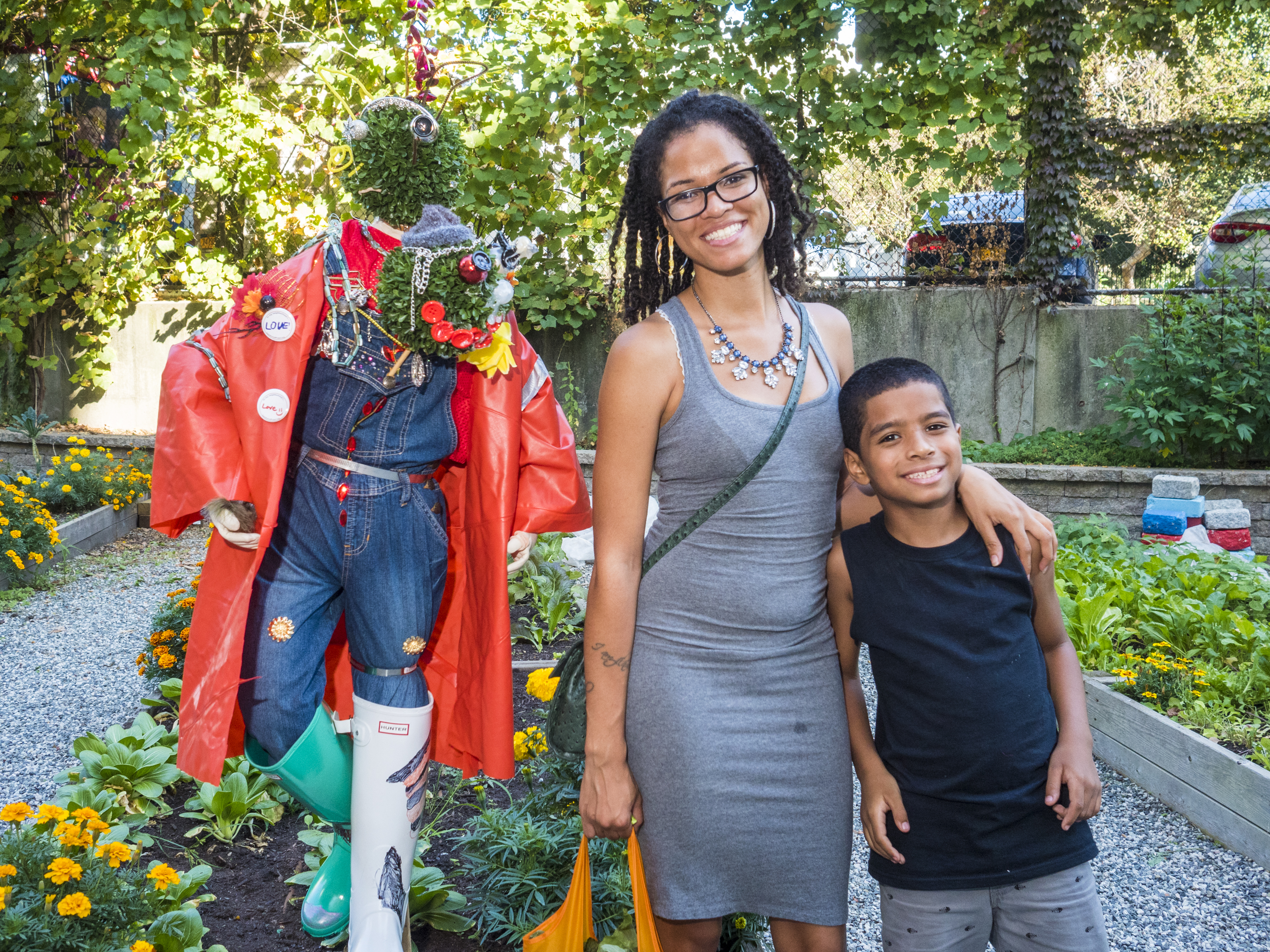 A family poses for the "Scarecrow Story Circle Procession” event in the
Kelly Street Community Garden
at The Laundromat Project’s Field Day 2017 in Hunts Point / Longwood.
Photo Credit: Osjua Newton; Courtesy of The Laundromat Project.
A family poses for the "Scarecrow Story Circle Procession” event in the
Kelly Street Community Garden
at The Laundromat Project’s Field Day 2017 in Hunts Point / Longwood.
Photo Credit: Osjua Newton; Courtesy of The Laundromat Project.
Do you have enduring partnerships with specific places?
For several years, we had been been doing arts education programming on weekends at different laundromats. Our longest relationship was with a laundromat in Harlem on 116th street where we did regular programming during the summer and one-offs throughout the rest of the year.
When we were first piloting this program, we still had to answer a lot of questions—will artists apply, will artists be interested, will the community connect? We needed to answer these in order to build our organization over time. As a result of us working specifically with modest income and P.O.C. communities, we were able to work throughout all five boroughs and even New Jersey and Philadelphia on occasion. One of the things that I'd brought to the board's attention in 2013 was the idea of continuing to work with artists and focus residency programs into anchor neighborhoods.
We chose three of neighborhoods—Harlem, Bed-Stuy, and Huntspoint/Longwood in the South Bronx—and have five residents a year, with three of them located in the anchor neighborhoods and two elsewhere in the city. We also have a professional development program where artists can come from wherever, but the residencies are always focused on the five boroughs.
In 2014, a group of our Create Change fellows at the Huntspoint/Longwood location ended up in a really beautiful and reciprocal relationship with a community garden in Longwood. That project working with the Kelly Street Garden Committee, developing programming and reviving their community block party which they hadn't had in ten years helped amplify community voices and gave them support to continue doing what they wanted to do. When that was over, the entity that owns the community garden (an affordable housing developer called Workforce Housing along with a nonprofit called Banana Kelly) reached out and offered us an apartment on Kelly Street. It's one of five apartments owned by the development group on that street—the super has one, the community garden organizer has one, Banana Kelly uses one as a space for food and cultural related programming, and a fourth that hadn't yet been programmed. They offered that to us to use as a creative community space.
We do not pay rent and they help subsidize the utilities, but we do pay for all the staffing, programming, etc. We started that conversation in 2014 and moved into the space over a year later in 2015. It's now called the Kelly Street Collaborative and it's partners are The Laundromat Project, the Kelly Street Garden Committee, Workforce Housing, and Banana Kelly.
It's a modestly sized garden-level, two-bedroom apartment. One of the bedrooms is designated as a year-long studio residency for a Bronx artist. Oftentimes it's their first studio space, so it offers an opportunity to really expand on their practices. We work really closely with our other community partners to select the artists who are there and help with the programming—again, trying to work in rhythm with the community and not just catering to what we think is interesting.
 The Laundromat Project "Create Change" Fellow Nikomeh Anderson facilitates activities during the 2017 Kelly Street Annual Block Party.
Photo credit: Osjua Newton; Courtesy of The Laundromat Project
The Laundromat Project "Create Change" Fellow Nikomeh Anderson facilitates activities during the 2017 Kelly Street Annual Block Party.
Photo credit: Osjua Newton; Courtesy of The Laundromat Project
What are the specifics of your programs, between the residency, the artist development workshops, etc?
We work in our anchor communities which crosses over into the way we do our artist development work. To give you a venn-diagram, our main program is called "Create Change." That's the more broad residency program that's open to the five boroughs (including our three anchor neighborhoods) and is geared toward artists of color who are interested in building community tuned, socially engaged projects. That's a six month residency, though this year we've expanded and have selected Lizania Cruz who is one of our alumni for one year-long position.
Our fellowship program meanwhile includes up to 15 artists a year who go through a six month training program. It includes two months of intensive workshops. Our artists-in-residence also go through those workshops in tandem. There is a real skill set in the building of community networks and resources that helps artists achieve their projects in a stronger way. They are learning about cultural organizing, building community partnerships, and the responsibility of being part of a community.
Now that we've been doing this for 13 years in various ways, we've had a chance to reflect and recognize that community stories have really animated so many of our projects. We've done about 67 projects over our lifetime and so many of them have involved collecting and gathering stories. We now have workshops that help people think about the ethics of that, what it means to deeply listen and connect, etc.
How do you select which artists you are working with? Is it an open application?
The fellowship program is an open-call application. The residency program is more of a nomination process since it's asking someone to go into a community and they have a responsibility to take as much care as possible. They come to us with a project and a community in mind, with which they are personally accountable for. With the Kelly Street Project, The Laundromat Project serves as the initial connective tissue between artists and community, so the relationship is a little more mediated at first. For the last two years, we've included two people from the Kelly Street community to be a part of the five-person panel that selects the cohort of 20 Create Change artists that will be working with The Laundromat Project for the entire year.
You had mentioned providing support to the artists working with The Laundromat Project. Can you elaborate on that support ?
In terms of the support we provide, we are now able to offer $7,500 for each six month artist-in-residence and up to $2,500 in production costs. For the year-long residency, it's $15,000 as well as $7,500 in production. The Kelly Street residency provides free 24-access studio space, as well as a $3,000 honorarium and $1,000 toward production costs. As for the fellowships, it was previously a program that participants had to pay for. Now, we are able to offer it for free.
 The Laundromat Project's 2017 Bed-Stuy "Create Change" Artist-in-Residence Lizania Cruz collaborates with the
Black Alliance for Just Immigration
for a series of immigrant-centered story circles at
caribBEING House
in the
Brooklyn Museum
.
Photo credit: Yeji Jung; Courtesy of The Laundromat Project.
The Laundromat Project's 2017 Bed-Stuy "Create Change" Artist-in-Residence Lizania Cruz collaborates with the
Black Alliance for Just Immigration
for a series of immigrant-centered story circles at
caribBEING House
in the
Brooklyn Museum
.
Photo credit: Yeji Jung; Courtesy of The Laundromat Project.
What's on the horizon for The Laundromat Project?
Fall is always one of our busiest times! Lizania Cruz has been our year-long artist-in-residence, working closely with the Black Alliance for Just Immigration to amplify stories of the immigrant community in Bed-Stuy. She's created We the News which is a pop-up, portable newsstand that contains zines that focus on stories of traditions and rituals and will be set up at all different venues throughout the five boroughs, including the Queens Museum, the Brooklyn Museum , local festivals, and storefronts around Bed-Stuy.
We have also been working with the Chinatown Art Brigade which is a collective of artists and tenants in Manhattan's Chinatown in particular. It was founded in 2015 by three women artists (two of whom met as Create Change artists in 2012) as a way to fight against racial and economic inequality in their neighborhood. This year, we've been able to support the collective in creating Here to Stay: Housing for the People Mapping Project , an bilingual augmented reality experience that features short video and audio testimonials from tenants who are directly impacted by displacement.
RELATED ARTICLES:
Art & Gentrification: What is "Artwashing" and What Are Galleries Doing to Resist It?
"You Give It Legs and You Disappear": Mel Chin on Taking Over New York with Public Art and Altruism
How This Year's Manifesta Biennial Is Combatting the Rise of Neo-Fascism and Xenophobia in Italy











